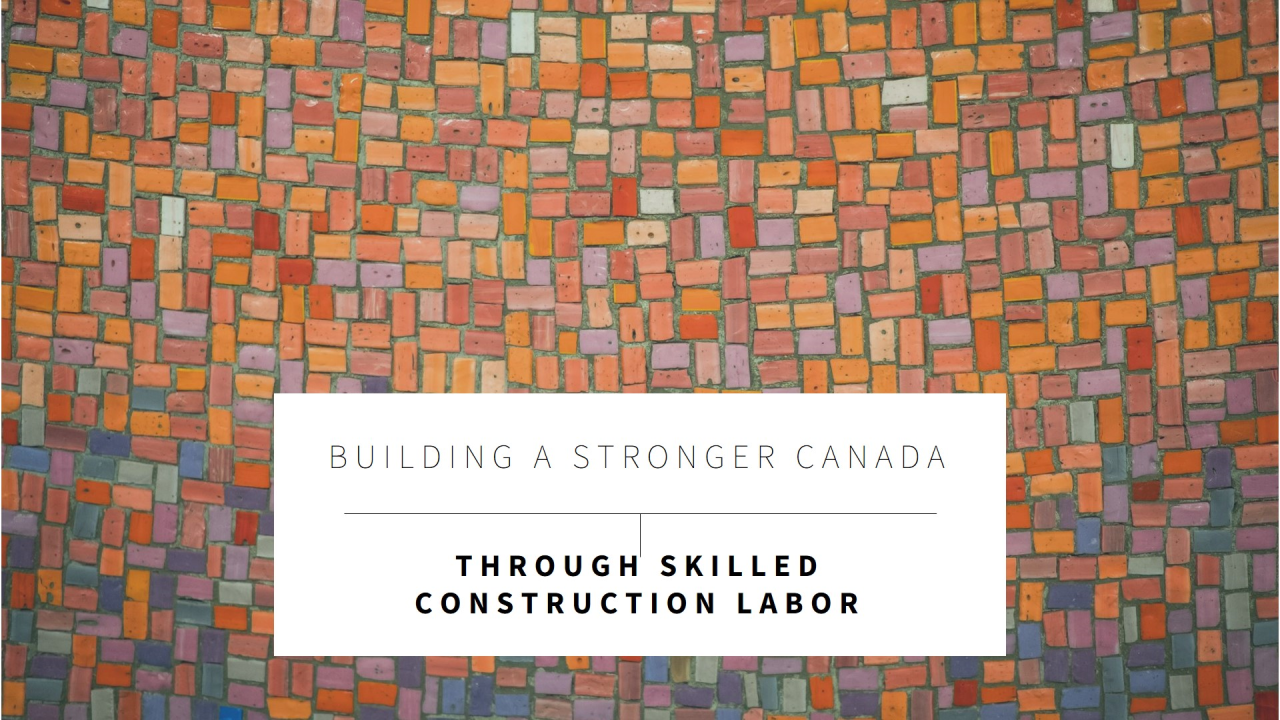Addressing Canada's Housing Shortage: Exploring The Potential Of Modular Construction

Table of Contents
The Current State of Canada's Housing Crisis
Canada's housing market is grappling with a severe shortage, characterized by escalating prices, limited supply, and growing housing insecurity. The affordability crisis is particularly acute in major urban centers like Toronto and Vancouver, where homeownership has become increasingly unattainable for many Canadians. This shortage extends beyond affordability, impacting the availability of housing for all income levels.
- High housing prices in major cities like Toronto and Vancouver: Home prices in these cities consistently rank among the highest globally, far exceeding the average Canadian income.
- Limited housing supply, especially affordable housing: The supply of new housing units has not kept pace with population growth and demand, leading to a significant deficit, especially in the affordable housing sector.
- Increasing homelessness and housing insecurity: The housing shortage contributes directly to rising rates of homelessness and housing insecurity across the country, impacting vulnerable populations disproportionately.
- The impact on the Canadian economy: The housing crisis creates ripple effects throughout the Canadian economy, hindering economic growth and impacting productivity. It also contributes to social inequality and reduces overall quality of life. The lack of affordable housing options can also restrict workforce mobility, as individuals struggle to find suitable housing near employment opportunities.
Modular Construction: A Viable Solution
Modular construction, also known as offsite construction or prefabricated construction, offers a promising solution to Canada's housing crisis. This method involves building housing components in a controlled factory environment and then transporting them to the construction site for assembly. This differs significantly from traditional "stick-built" construction, which takes place entirely on-site.
- Faster construction times compared to traditional methods: Modular construction significantly reduces construction timeframes, often completing projects in a fraction of the time it takes traditional methods. This accelerates the delivery of much-needed housing units.
- Reduced labor costs due to factory-based production: Factory-based production allows for streamlined workflows and increased efficiency, leading to lower labor costs compared to on-site construction.
- Less on-site waste and a smaller environmental footprint: The controlled factory environment minimizes waste generation and allows for better management of materials, leading to a smaller environmental footprint.
- Improved quality control and consistency: The factory setting provides a consistent and controlled environment, leading to higher quality control and more consistent results compared to traditional methods.
- Potential for prefabricated components leading to faster completion: The use of prefabricated components further streamlines the construction process, allowing for faster completion times and reduced on-site work.
Types of Modular Construction
Several types of modular construction exist, each with its own advantages and disadvantages:
- Volumetric modular construction: Involves building entire modules (rooms or sections of a building) in the factory. These are then transported and craned into place on the site. This method is ideal for larger projects and multi-unit dwellings.
- Panelized modular construction: Involves building individual wall panels, roof sections, and floor sections in a factory and assembling them on-site. This approach is more flexible and adaptable to various project sizes and designs.
Addressing Concerns and Challenges
While modular construction presents significant advantages, certain challenges need to be addressed:
- Public perception and acceptance of modular homes: Some Canadians may harbor misconceptions about the quality and durability of modular homes, requiring public education campaigns to promote understanding.
- Transportation logistics and site preparation: Transporting large modular units requires careful planning and specialized transportation, and appropriate site preparation is necessary to ensure smooth installation.
- Building codes and regulations related to modular construction: Building codes and regulations need to be updated and streamlined to facilitate the wider adoption of modular construction techniques.
- Skilled labor availability for modular construction projects: A skilled workforce is essential for successful modular construction. Training and upskilling initiatives may be required to meet the demand for skilled labor.
Government Support and Incentives
Government intervention is crucial in accelerating the adoption of modular construction. Incentives and supportive policies can significantly boost the sector:
- Tax breaks and subsidies for modular housing projects: Financial incentives can make modular construction more attractive to developers and investors.
- Streamlined building permit processes for modular constructions: Simplifying the permitting process will reduce delays and costs.
- Funding for research and development in modular building technology: Investment in R&D can lead to innovations and improvements in modular construction techniques.
- Initiatives promoting the use of sustainable materials in modular construction: Promoting sustainable building practices aligns with broader environmental goals.
Case Studies and Success Stories
Several successful modular construction projects demonstrate the viability of this approach. (Note: Specific examples of Canadian and international projects would be inserted here. For example, mention of successful affordable housing projects completed using modular construction methods.)
Conclusion
Modular construction offers a promising approach to tackling Canada's urgent housing shortage. By leveraging its speed, efficiency, and sustainability benefits, we can create more affordable and accessible housing options. Government support, public awareness, and industry collaboration are crucial to unlocking the full potential of modular construction as a key solution to the housing crisis. To learn more about innovative solutions to Canada's housing shortage, explore the possibilities of modular construction further and contact a modular construction expert today.

Featured Posts
-
 Trendovi U Kupovini Nekretnina Srbi Biraju Stanove U Inostranstvu
May 17, 2025
Trendovi U Kupovini Nekretnina Srbi Biraju Stanove U Inostranstvu
May 17, 2025 -
 Tracy Morgan In The News Recent Updates And Headlines
May 17, 2025
Tracy Morgan In The News Recent Updates And Headlines
May 17, 2025 -
 Shtwtjart Yhtfl Bewdt Stylr Qbl Nhayy Kas Almanya
May 17, 2025
Shtwtjart Yhtfl Bewdt Stylr Qbl Nhayy Kas Almanya
May 17, 2025 -
 Top Bitcoin Casinos 2025 Is Jack Bit The Best Choice
May 17, 2025
Top Bitcoin Casinos 2025 Is Jack Bit The Best Choice
May 17, 2025 -
 The Status Of Donald And Melania Trumps Marriage Fact Vs Fiction
May 17, 2025
The Status Of Donald And Melania Trumps Marriage Fact Vs Fiction
May 17, 2025
